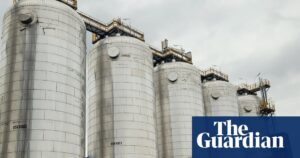
Foreign investors are increasingly purchasing properties in Victoria, Australia, outpacing all other states despite the introduction of new taxes and fees designed to curb offshore demand. According to the Australian Taxation Office’s inaugural Register of Foreign Ownership report, overseas buyers acquired 2,606 properties in Victoria last year, marking a significant increase from 1,703 in 2021-22—a rise of over 50% in two years.
These international investors spent a total of $2.25 billion on new homes and land across the state. Most were attracted to new dwellings and undeveloped land valued under $1 million, rather than established or luxury properties. This trend has positioned Victoria as the leading destination for foreign property buyers in Australia, despite concerns about housing affordability, traffic congestion, rising crime, and the cost of living.
Foreign Investment Trends and Impacts
Buyers from China, Japan, Singapore, and Hong Kong accounted for nearly half of all foreign property purchases in Australia last year. China maintained its status as the largest source of foreign buyers, acquiring over 2,000 properties worth approximately $2 billion.
The Register of Foreign Ownership of Australian Assets, established in 2023, provides a comprehensive national record of foreign-held assets. The latest report, released earlier this month, includes data up to June 30, 2024, and offers a longer-term view of foreign ownership trends. Since 2016, overseas buyers have purchased over 40,000 properties, with Victoria accounting for the largest share at around 17,000.
While the report does not directly assess the impact of these purchases on housing affordability, the data underscores Victoria’s continued appeal to foreign investors.
Expert Insights on Foreign Investment
Sha Liu, a senior housing policy researcher at the University of Adelaide, notes that while the data indicates a rebound in foreign investment, the figures remain historically low.
“Foreign buyers now account for only about 1% of total housing transactions, both in number and in value,” she said. “That’s a huge drop from the nearly 5% share we saw at the peak around 2015-16.”
Liu attributes the decline to new measures introduced by federal and state governments over the past decade, including application fees, stamp duties, land-tax surcharges, capital gains tax for non-residents, and the annual vacancy fee. These have made it more costly for foreign buyers to purchase and maintain property in Australia.
She also pointed out that foreign buyers tend to focus on prime locations in Sydney and Melbourne, which garners significant attention. However, she emphasized that their impact on local housing markets is often overstated compared to larger factors such as supply constraints, domestic investor activity, and tax settings.
“Foreign buyers are not locking out local first home buyers in any broad or systematic way, given their small share of the overall market,” she added.
Foreign Ownership in Agricultural Land
According to the report, Australian farmland continues to attract overseas capital. The registered interest in Australian farmland increased to 12.7% in 2024, up from 3% in 2022. Investors from Britain, China, Canada, the United States, and the Netherlands remain the largest foreign holders of Australian farmland, collectively accounting for nearly half of all land with foreign ownership.
The register documents parcels of land with a foreign ownership share of 20% or more. It found that of the 49.12 million hectares with some level of foreign ownership, 23% was indirectly held by Australian investors via foreign entities. In Victoria, the proportion of foreign ownership of agricultural land was 5.9% as of June 2024, equating to 675,000 hectares of the state’s 11.3 million hectares of farmland.
In the 12 months leading to June 2024, foreign-owned Victorian farmland increased by about 9,000 hectares, up from 666,000 hectares a year earlier. Most foreign-owned agricultural land in Victoria is used for forestry, followed by cropping.
Local Perspectives on Agricultural Investments
Victorian Farmers Federation president Brett Hosking stressed the importance of monitoring investment to ensure Australia continues to attract foreign capital without undermining local farmers and future generations.
“Foreign investment is an important source of jobs and future growth for our sector, although it must always be considered in terms of its impact on farmers, communities, and the interests of every Australian who enjoys the fantastic food and fibre our family-owned farms produce,” he said.
Victoria’s level of foreign agricultural ownership remains well below that of states such as Tasmania (23.9%) or the Northern Territory (27.6%). Foreign investors also held 4,932 gigalitres of water entitlements, up from 4,775 GL a year earlier, representing about 12.3% of all water entitlements nationwide.
The ongoing trend of foreign investment in both residential and agricultural sectors highlights the complex dynamics at play in Victoria’s property market. As the state continues to attract international attention, the balance between welcoming investment and protecting local interests remains a critical focus for policymakers and communities alike.






